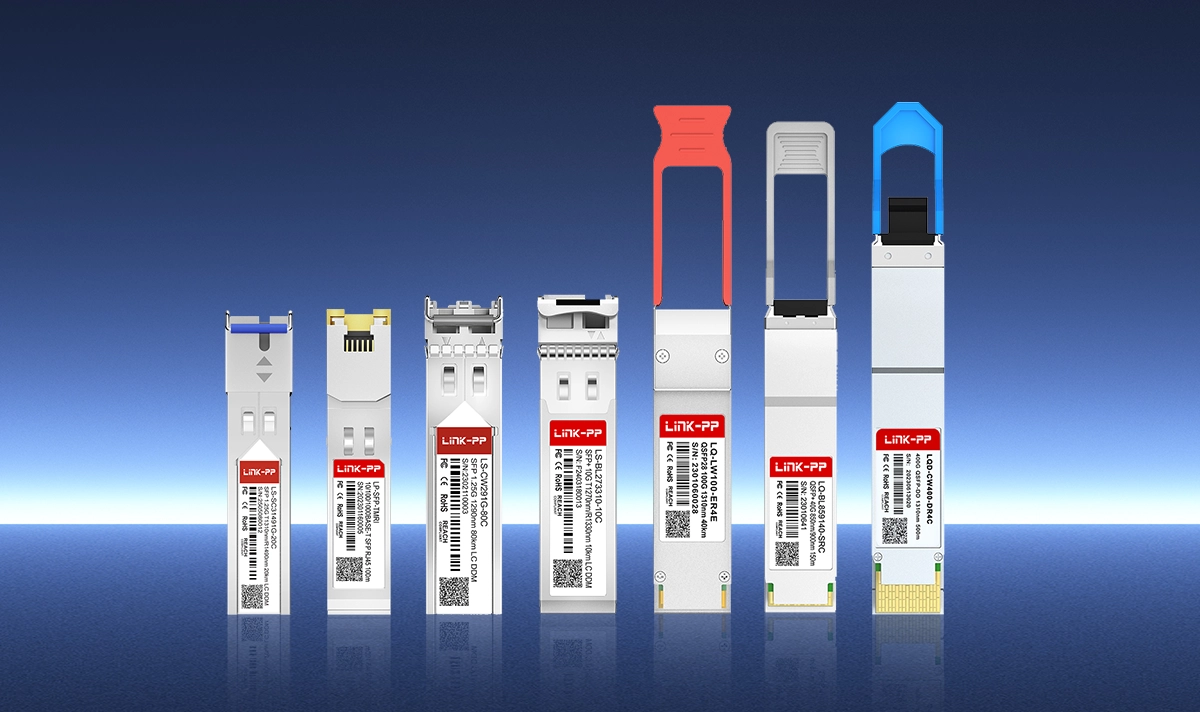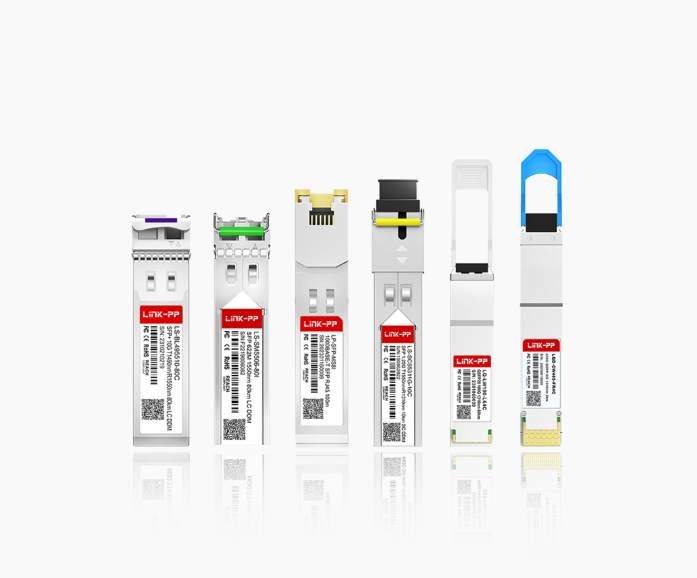
In the heart of every modern data center lies a relentless pursuit of two things: performance and efficiency. As global data traffic soars, the energy demands of these digital powerhouses have come under intense scrutiny. While servers and cooling systems often steal the spotlight, a significant and frequently overlooked power draw comes from the unsung heroes of connectivity: optical transceivers.
These small but mighty components are critical for transmitting data across networks, but they can collectively account for a substantial portion of a data center's energy bill. Optimizing their power consumption is no longer a niche concern; it's a core requirement for sustainable, cost-effective operations. This guide will provide actionable strategies to significantly reduce optical transceiver power usage, helping you build a greener, more efficient infrastructure.
➤ Why Optical Transceiver Power Efficiency Matters
Before diving into the "how," let's understand the "why." The push for lower power consumption in optical modules is driven by several critical factors:
Cost Reduction: Energy is one of the largest operational expenses (OpEx) for any data center. Reducing the power draw of thousands of transceivers directly translates to lower electricity bills.
Thermal Management & Cooling: Every watt consumed by a transceiver generates heat. Lower power consumption means less heat output, reducing the burden on expensive cooling systems and creating a more stable operating environment.
Environmental Responsibility: The IT industry is under pressure to minimize its carbon footprint. Implementing energy-efficient data center practices is a key step toward achieving corporate sustainability goals and complying with evolving regulations.
Density and Scalability: As data centers move towards higher port densities (e.g., 400G and 800G), the power budget per rack becomes a limiting factor. Lower-power transceivers allow you to pack more capacity into the same space without overloading power circuits.
➤ Key Factors Influencing Transceiver Power Draw
Not all optical transceivers are created equal. Their power consumption is influenced by several design and operational factors:
Data Rate: Higher-speed transceivers (e.g., 400G, 800G) generally consume more power than their lower-speed counterparts (e.g., 10G, 25G).
Reach and Technology: Long-reach modules (e.g., ZR, ER) require more powerful lasers and electronics than short-reach (e.g., SR) modules. Coherent optics, essential for long-haul DCI, are particularly power-hungry.
Form Factor and Design: Newer form factors like QSFP-DD and OSFP are designed for better power efficiency at high speeds compared to older ones. The quality of internal components and the efficiency of the DSP (Digital Signal Processor) play a huge role.
Operational State: A transceiver's power draw can vary between active, idle, and low-power sleep modes.
➤ Actionable Strategies to Minimize Power Usage
Implementing a holistic strategy is key to achieving meaningful power savings. Here are the most effective approaches:
1. Right-Sizing Your Transceiver Selection
One of the simplest ways to save power is to avoid over-provisioning. Don't use a 40km transceiver for a 500-meter link. Carefully assess your actual distance requirements and choose the lowest-power, shortest-reach module that gets the job done. This is a fundamental step in optimizing data center network efficiency.
2. Embrace Advanced, Power-Optimized Form Factors
Migrate to modern form factors designed with efficiency in mind. For example, QSFP-DD modules often provide a better watts-per-gigabit ratio than older CFP2 designs for the same data rate.
3. Leverage Tunable Optics
Instead of stocking multiple fixed-wavelength DWDM modules for your metro network, use a single tunable transceiver. This reduces inventory complexity and power consumption, as a single, well-designed tunable module is often more efficient than multiple fixed ones.
4. Implement Power Management Features
Many modern transceivers support advanced power management protocols like Energy Efficient Ethernet (EEE). EEE allows transceivers to enter a low-power "sleep" mode during periods of low data activity, waking up almost instantly when traffic resumes. Ensuring these features are enabled in your network gear can lead to substantial savings.
5. Prioritize High-Quality, Verified Components
The market is flooded with generic transceivers, but their lower upfront cost can be deceptive. They often use less efficient components, run hotter, and consume more power. Investing in high-quality, MSA-compliant optics from reputable manufacturers ensures optimal performance and efficiency.
➤ A Deep Dive into Modern Optical Transceivers

To truly master power reduction, we must understand the engine itself. An optical transceiver is a complex device that performs both electrical-to-optical (E/O) and optical-to-electrical (O/E) conversion. Its power is primarily consumed by its laser driver, post-amplifier, and the DSP that handles signal integrity.
The evolution towards higher speeds has made the DSP a major power consumer. This is where innovation from leading manufacturers makes a tangible difference. For instance, LINK-PP has engineered its latest transceivers with a focus on reducing power consumption in high-speed networks. By integrating a highly efficient, proprietary DSP and optimizing their laser designs, they achieve significant energy savings without compromising performance or reliability.
A prime example is the LINK-PP 400G-DR4 transceiver. This module is engineered for high-density 400G applications in data centers and is a benchmark for low-power optical transceiver solutions. It consumes up to 25% less power than industry averages for comparable modules, making it an ideal choice for organizations looking to deploy high-performance, sustainable infrastructure.
Comparative Power Consumption Table
The following table provides a simplified comparison of typical power consumption across different transceiver types, illustrating the impact of data rate and technology.
Form Factor | Data Rate | Technology / Reach | Typical Power Consumption | Notes & Comparison |
|---|---|---|---|---|
SFP+ | 10G | SR (100m) | 0.8W - 1.0W | Baseline for lower-speed access layers. |
QSFP28 | 100G | SR4 (100m) | 2.5W - 3.5W | Common for spine-leaf connections. |
QSFP-DD | 400G | DR4 (500m) | 8.0W - 12.0W | LINK-PP LQD-CW400-DR4C operates at ~8.5W. |
QSFP-DD | 400G | FR4 (2km) | 10.0W - 14.0W | Higher power due to longer reach. |
QSFP-DD/OSFP | 800G | SR8 (100m) | 12.0W - 16.0W | The frontier for high-density compute. |
Coherent | 400G+ | ZR (80km+) | 14.0W - 20.0W+ | Power-hungry but essential for DCI. |
💡 Note: Values are approximate and can vary between manufacturers. The efficiency of a brand like LINK-PP is evident in its ability to deliver performance at the lower end of these power bands.
➤ Conclusion: Power Efficiency is a Strategic Imperative
Reducing the power consumption of optical transceivers is not about a single magic bullet. It's a strategic initiative that involves right-sizing your optics, adopting modern form factors, enabling power management features, and, crucially, partnering with a vendor that prioritizes energy efficiency.
The cumulative effect of these measures can lead to megawatt-scale savings in a large data center, slashing operational costs and boosting your sustainability credentials. In an era where every watt counts, the choice of your optical components has never been more critical.
➤ FAQ
What is the fastest way to lower optical transceiver power use?
You can change old transceivers for new ones that save energy. Look for modules you are not using and take them out. Use special tools to see which ones use too much power. These steps help you save energy fast.
How often should you check your transceivers for energy efficiency?
Check your transceivers at least one time every year. Look at how much power they use and compare with new models. Doing this often helps you find better choices and keep your data center working well.
Can you reduce power without replacing hardware?
Yes. You can make your cooling systems work better by moving air around. Use software to turn off modules that are not being used. Set up alerts if something uses too much power. These things help you save energy without buying new parts.
Do energy-efficient transceivers affect network speed?
No. Most energy-efficient transceivers still work fast and use less power. Always read the datasheet to make sure the model is right for your network.
What tools help you monitor transceiver power use?
You can use network management software to help you. These tools watch how much power is used, send alerts, and make reports. They help you find problems early and keep your data center working well.




